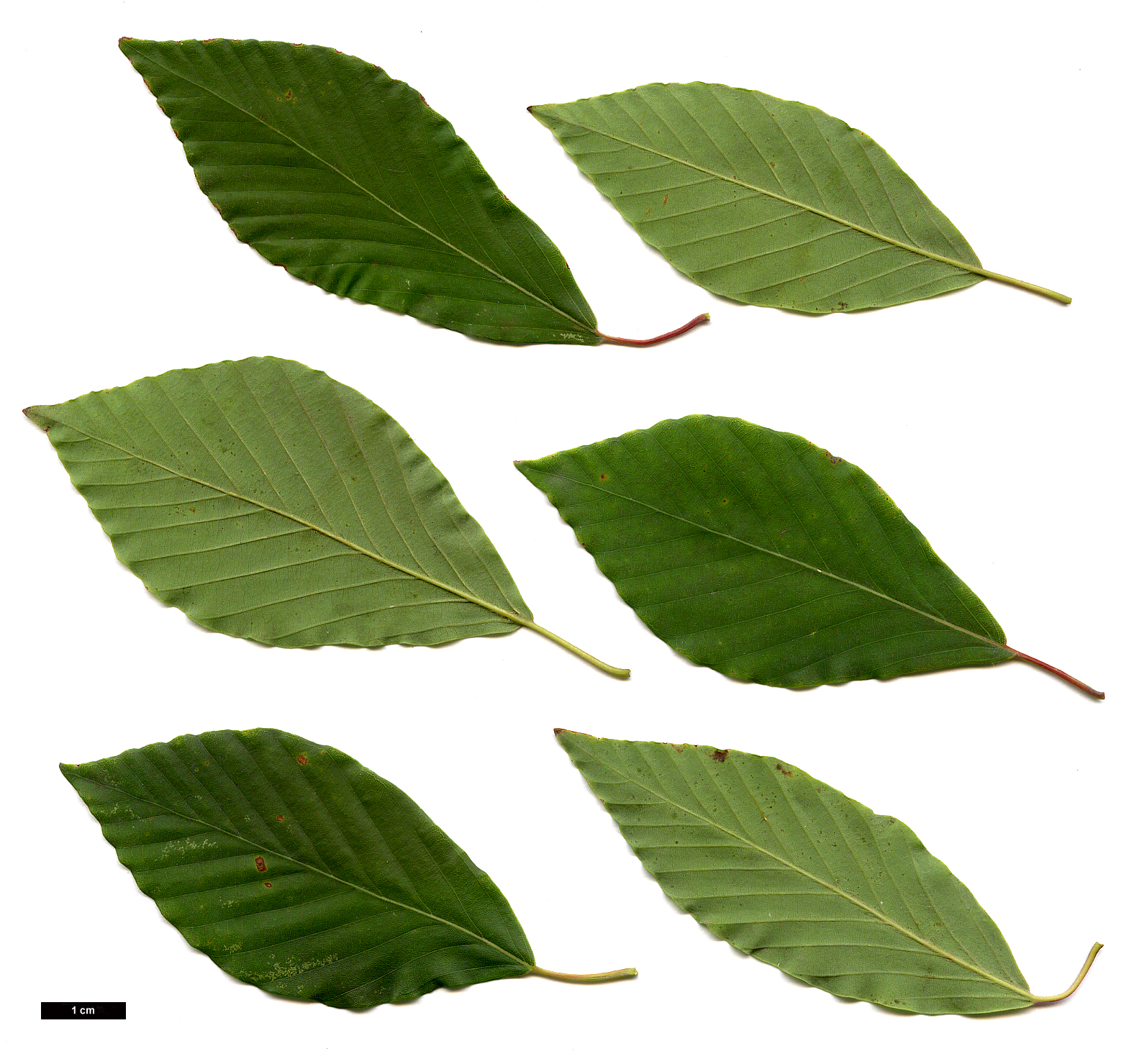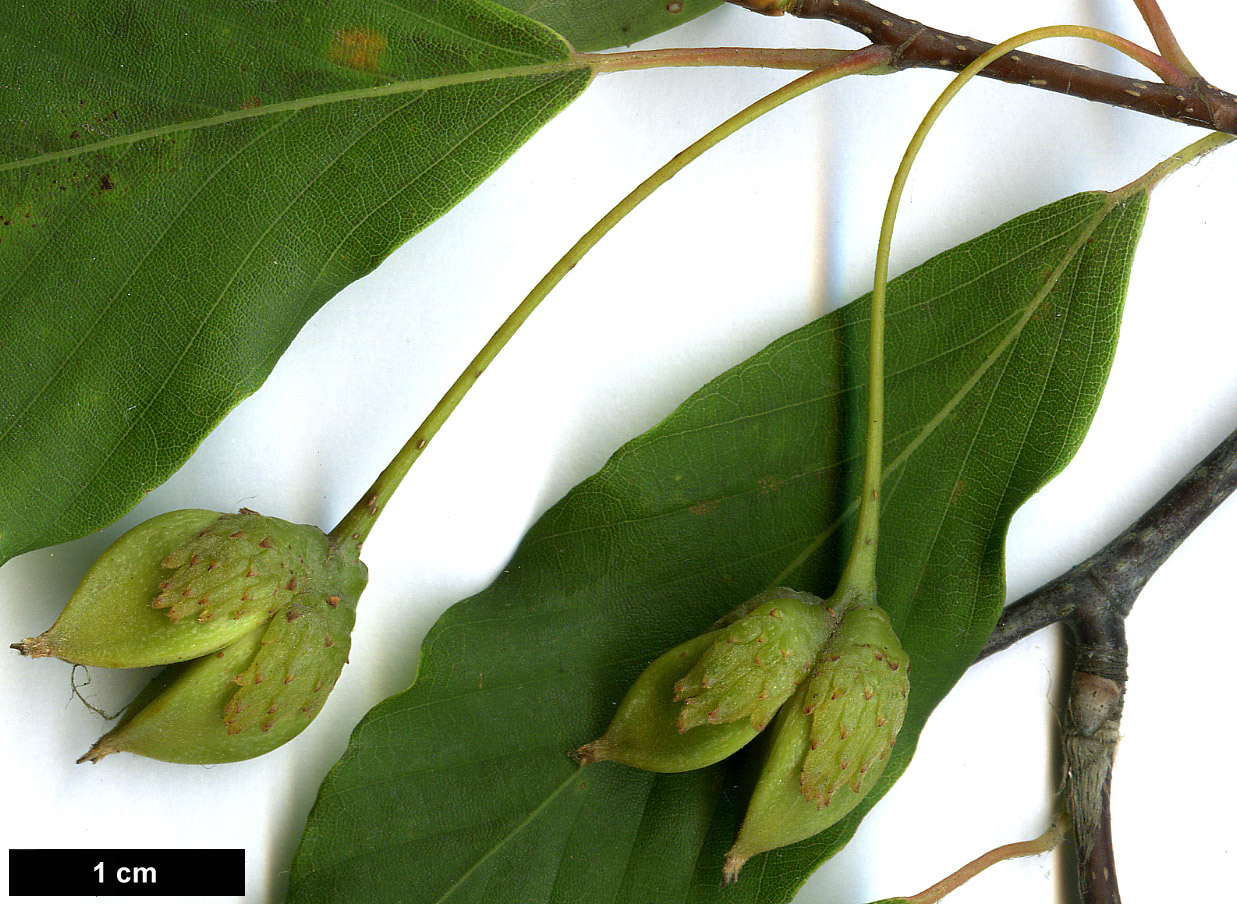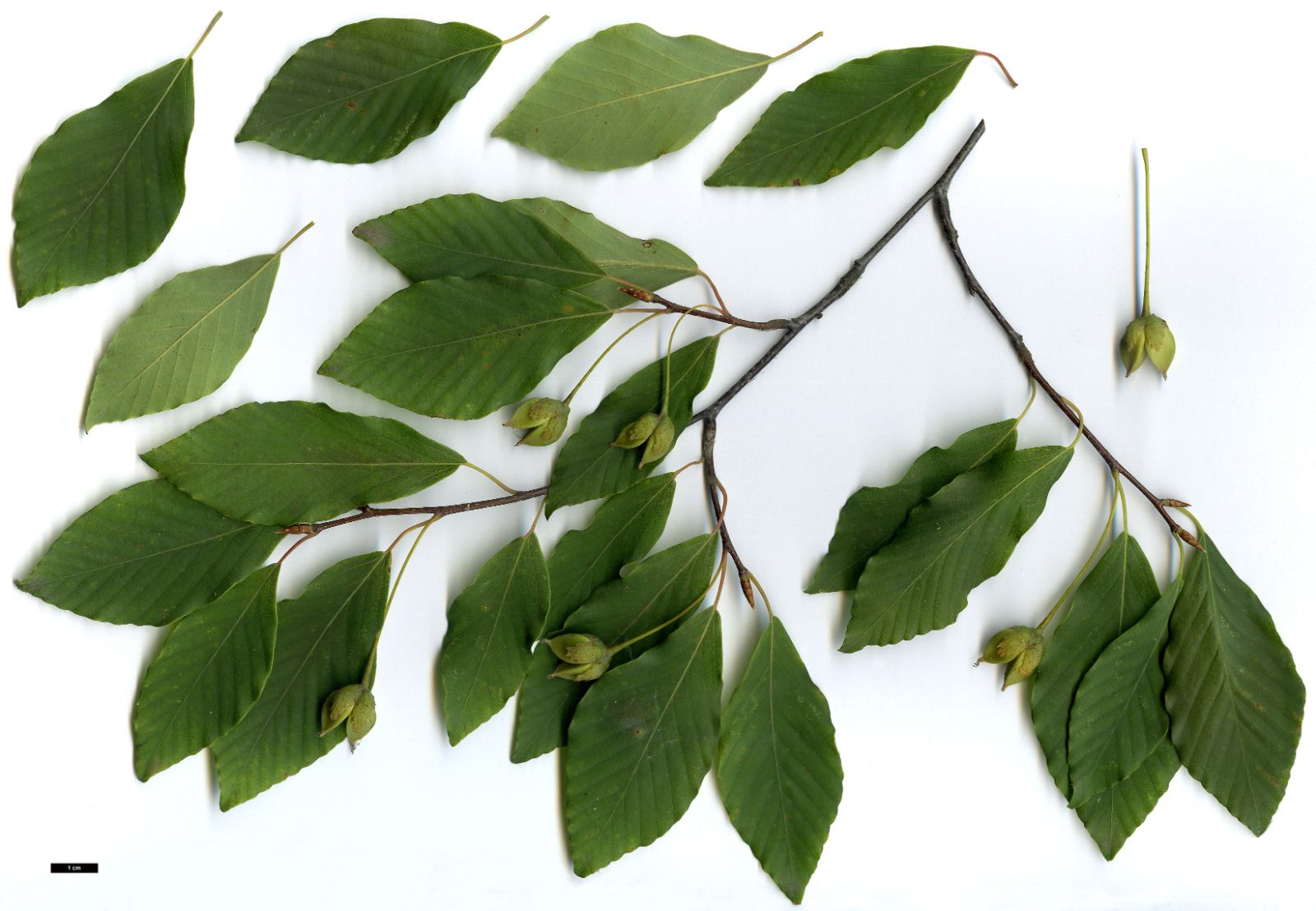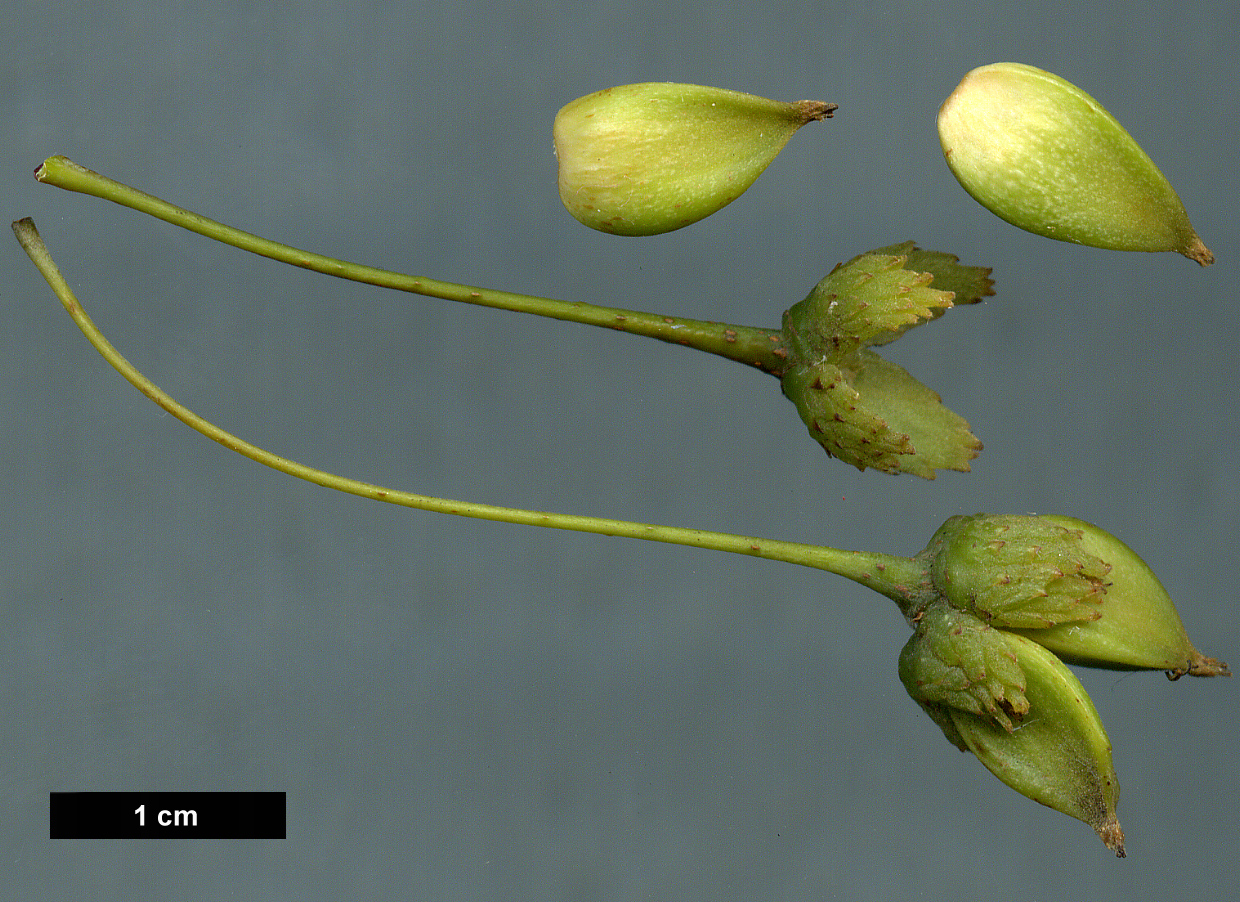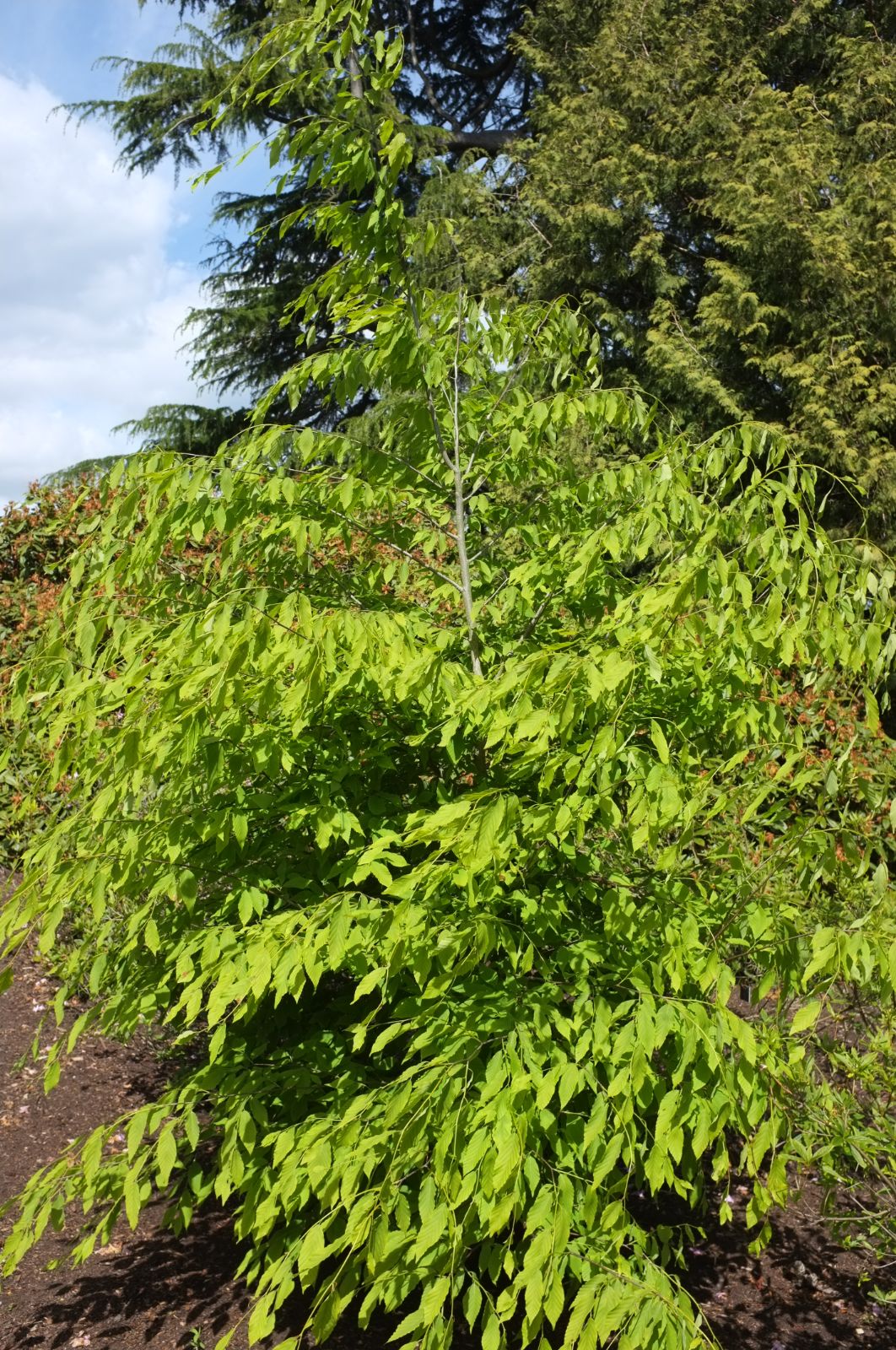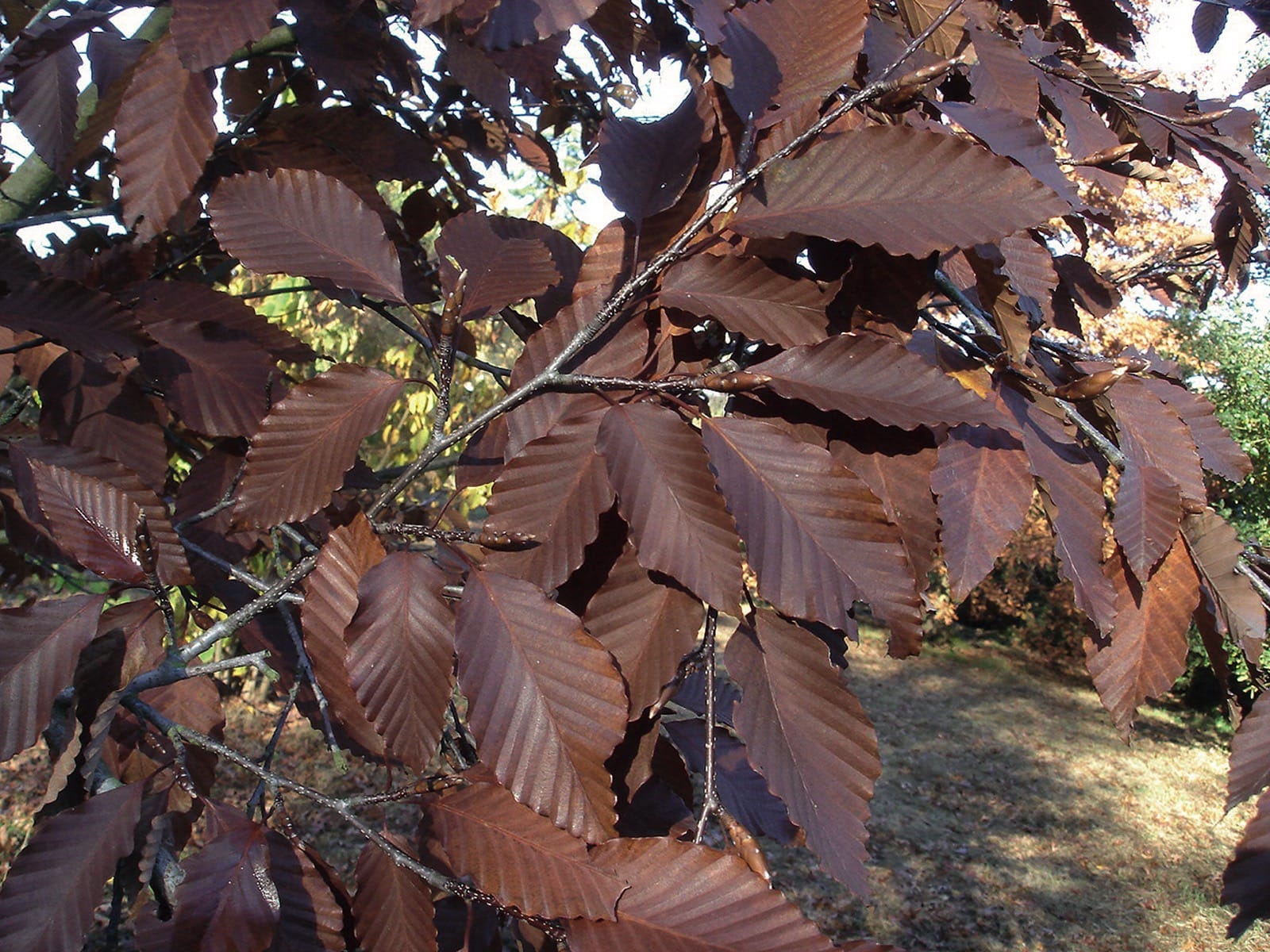Fagus japonica
Sponsor
Kindly sponsored by
a member of the International Dendrology Society
Credits
John Grimshaw & Tom Christian (2021)
Recommended citation
Grimshaw, J. & Christian, T. (2021), 'Fagus japonica' from the website Trees and Shrubs Online (treesandshrubsonline.
Genus
Common Names
- Japanese Blue Beech
Tree to 25 m, usually multi-stemmed from the base. Young shoots soon becoming glabrous. Leaves ovate to elliptic-ovate, 5–8 cm long 2.5–5 cm wide, dark green above, slightly glaucescent or grey-green below, pubescent on both sides when young, becoming glabrous above but persistently pubescent beneath at least along the midrib, lateral veins 10–14, base rounded to shallowly cordate, margin open-crenate to entire, apex short acuminate. Petioles 0.8–1 cm. Peduncles slender, glabrous, 3–4 cm. Cupule 0.6–0.8 cm long, with nut exserted. (Krüssmann 1985a, Ohwi 1965, Cullen et al. (eds) 2011).
Distribution Japan Mountains of Honshu, Shikoku, and Kyushu. With the exception of the Chugoku region it is restricted to the Pacific side of the country. South Korea Ullung-do (var. multinervis only)
Habitat Temperate forests, often in association with Abies firma, Tsuga sieboldii, Fagus crenata, and Quercus mongolica var. grosseserrata.
USDA Hardiness Zone 7b-8a
RHS Hardiness Rating H5
Conservation status Not evaluated (NE)
Native to mountains of Honshu, Shikoku, and Kyusu in Japan, where it is scattered in temperate forests and rarely a dominant species, unlike F. crenata which is an important forest tree (Ohwi 1965). Writing before its introduction to Britain, Elwes & Henry (1906) commented that the two occurred together in the wild (F. japonica from lower elevations) but that in several respects they were quite different trees. Sargent likened it to F. engleriana of China and there are similarities in foliage, notably the glaucous underside to the leaves and both have a propensity to be multi-stemmed, however as he went on to observe, the fruits are quite different (Sargent 1917).
It was introduced to western cultivation in 1905 when Wilson sent seed to the Arnold Arboretum (Krüssmann 1985a) and it arrived in Britain shortly afterward, when Prof. Sargent sent material to Kew in 1907 (Bean 1981). It remains rare and confined to specalist collections both in North America and in Europe. An accession dating from 31 January 1905, so presumably the Wilson original, still grows in the Arnold Arboretum and in 2017 was just shy of 0.4 m dbh (Arnold Arboretum 2019). This has been joined by a handful of plants from more recent collections, and there are young trees growing in such North American collections as the Morris Arboretum, Polly Hill Arboretum, and Quarry Hill Arboretum.
In mainland Europe it is cultivated in major collections, such as at Arboretum Wespelaar (Arboretum Wespelaar 2019) and at Hørsholm in Denmark. A tree at the Gothenburg Botanic Garden, Sweden (accession 1957–3802) was c. 12 m tall, 0.3 m dbh and fruiting heavily in 2019 (pers. obs.). There are few notable examples in the UK. One tree of 12 m (in 2017) grows in the Sir Harold Hillier Gardens, Hampshire, and another the same size (planted in 1987, measured in 2014) grows at Westonbirt. A 10 m tree grows in Viscount Devonport’s collection at Peasmarsh Place, Sussex, and in 2018 was 10 m × 0.22 m aged 20 years. (Tree Register 2019). F. japonica was collected in 2005 under BBJMT 296 and this material is growing at RBG Edinburgh and at Dawyck in Scotland. In both cases the young trees are now growing well after an initial period of ‘settling in’ and are 4.1 m and 1.6 m respectively (H. Thomson & M. McKenzie pers. comms. 2019). At this albeit early stage they are making beautiful trees, with fine, delicate foliage of the most vibrant green when the leaves first emerge (pers. obs.).
Bean noted that “Its most distinctive characters are: the rather glaucous undersides of the leaves; the long, slender and glabrous fruit-stalk; and the relative shortness of the husk (involucre) compared to the nut” (Bean 1981a).
var. multinervis (Nakai) Y.N. Lee
Synonyms
Fagus multivernis Nakai
Tree to 30 m, 0.7 m dbh. Branchlets glabrous, reddish grey. Leaves 9–17 × 5–10.5 cm, ovate, both surfaces with some hairs, glabrous at maturity, six to eight lateral veins on each side of midvein, margins undulate, apex obtuse; petiole 0.7–1 cm long; stipules silky, deciduous. The only useful character distinguishing var. multinervis from typical F. japonica is its distribution. (Nakai 1918).
Distribution
- South Korea – Ullung-do
RHS Hardiness Rating: H5
USDA Hardiness Zone: 6-7
This Ullung-do endemic is rare in cultivation, perhaps because of its typical beech habit of fruiting abundantly in mast years and hardly at all in others – a frustrating trait for the seed collector, as described by Tony Kirkham in his account of his quest for the tree (Flanagan & Kirkham 2005). The seedlings collected on that occasion did not survive, perhaps because they lacked their normal mycorrhizal connections (T. Kirkham, pers. comm. 2007). The only specimen seen for New Trees was at the Scott Arboretum, where there is a young plant donated by the US National Arboretum. This was 4 m tall in May 2006, with wide-spreading branches, and its dark green leaves were very noticeably different from those of more familiar beeches. It is also in cultivation at the Morris Arboretum.

